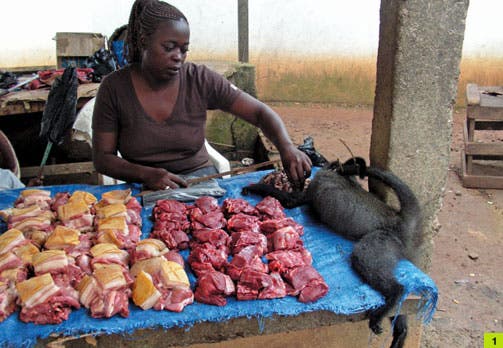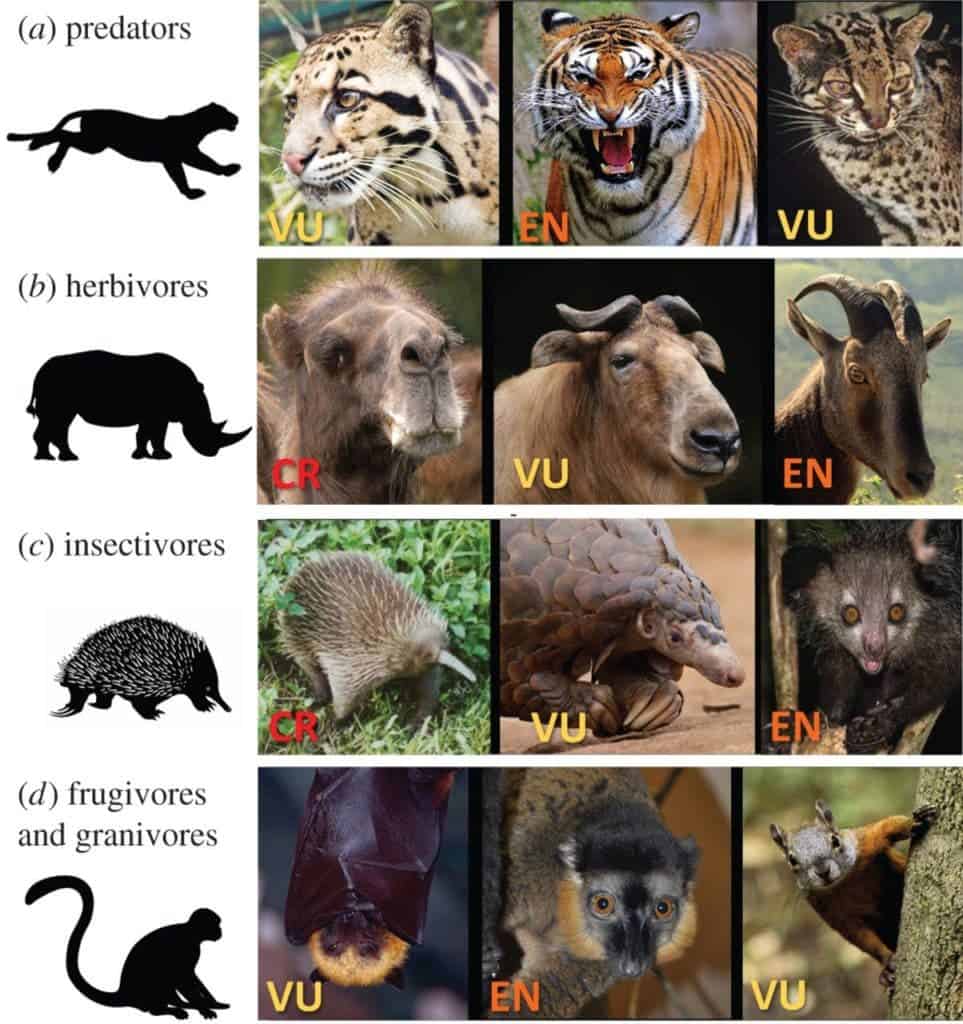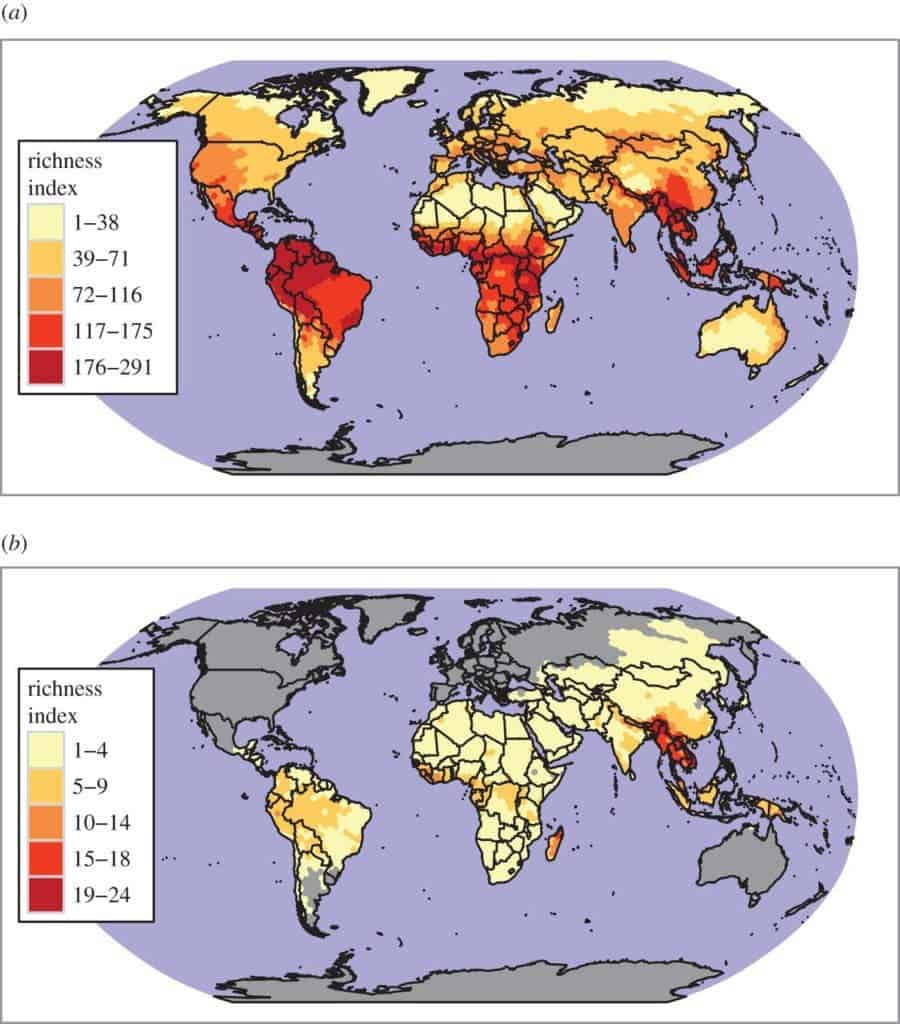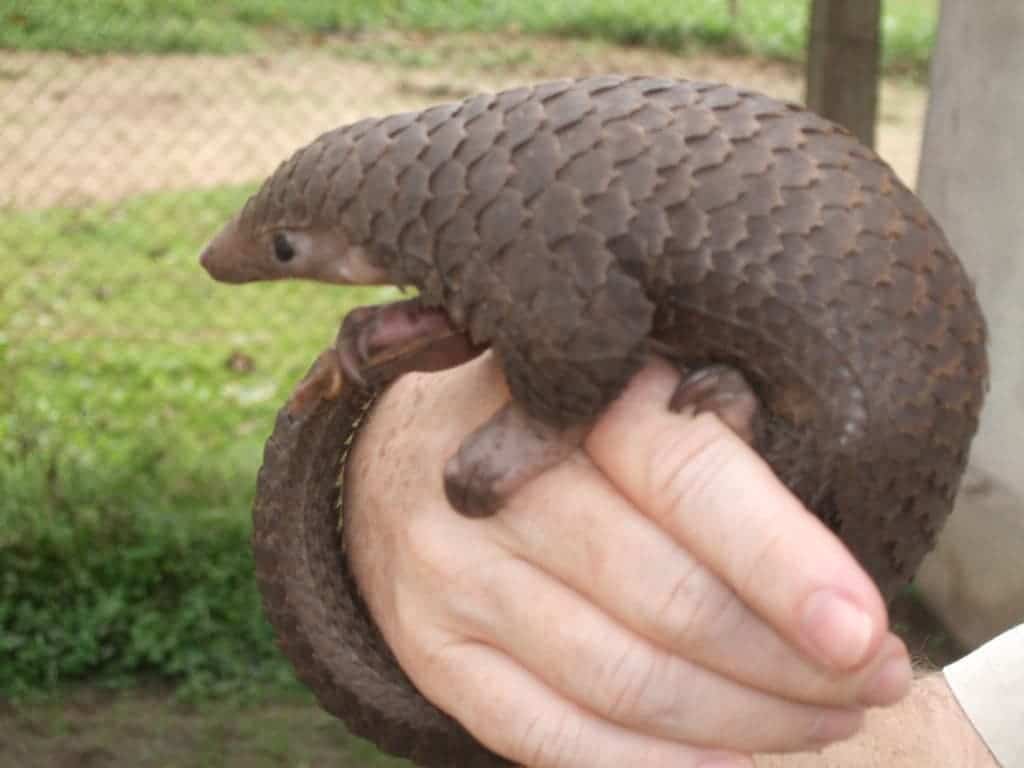
By now, many people have come to recognize that humans have drastically altered the environment — so much so that the planet’s climate is changing and thousands of species are faced with extinction. Habitat loss and pollution are the prime drivers of biodiversity loss but some might be surprised to learn the bushmeat trade has also a significant contribution. I say ‘surprising’ because, after all, food is more plentiful today than it ever was.
I say ‘surprising’ because, after all, food is more plentiful today than it ever was. There’s no shortage of produce, let alone meat. If your heart so desires you can eat chicken, beef or pork almost anywhere and cheap, too. Now, eating meat (every day) is anything but sustainable, but it sure beats shooting wildebeest for grub.
Some people, however, are no longer content with eating ‘regular’ meat. The last decade has seen a surge in bushmeat trade, new study finds, driven in part by the new wealthy elite coming out of developing Asian countries. Some of the delicacies on their menu include more than 300 species of animals currently faced by extinction at the hand of unregulated or illegal hunting.
These animals range from large ones like the grey ox, Bactrian camels, bearded and warty pigs, to small ones like the golden-capped fruit bat, black-bearded flying fox and Bulmer’s fruit bat
“This global bushmeat hunting crisis is a fundamentally distressing problem to address because it is intimately tied to human development challenges such as food insecurity, emergent disease risks and land-use changes. While many ethnic groups have hunted wildlife for subsistence over millennia, often with highly detrimental effects, the unsustainablility of this practice has accelerated in many areas due to growing human populations, an increasing tendency for wild meat to be traded commercially, and the widespread adoption of firearms and motorized transport that increase the efficiency and spatial extent of hunting,” the researchers wrote in the journal Royal Society Open Science.

These species are hunted for meat, medicine, body parts, trophies or live pets. According to the report, 126 species (more than any other group) are threatened by hunting. These include the lowland gorilla, chimpanzee, bonobo and many species of lemurs and monkeys.
According to the report, “an estimated 89,000 metric tons of meat with a market value of about $200 million are harvested annually in the Brazilian Amazon, and exploitation rates in the Congo basin are estimated to be five times higher….” Many locals depend on hunting for their protein and livelihoods. This results in concentrated overhunting in areas where there are little alternatives (agriculture, jobs, etc.).
However, most of the meat that comes from killed endangered animals isn’t meant for subsistence. Instead, it winds up in markets and, later, in restaurants where they’re sold as a delicacy. Previously, a report found five tons of bushmeat are smuggled weekly in tourist luggage through the Charles de Gaulle airport in Paris.
Then, there’s the slaughter of many individuals for body parts that supposedly have a ‘therapeutic’ value.

Poaching of black and white rhinos in South Africa has jumped in the last couple of years following reports in Southeastern Asia that rhino horn had cured a VIP of terminal liver cancer. Needless to say, there’s no scientific evidence that suggests rhino horn powder or its derivatives have any therapeutic purpose in treating cancer, impotence or any other circulated claim. The water buffalo is considered an alternative to rhino horn in the treatment of conditions ranging from fever to convulsions; the demand has stretched populations very thin, which nowadays only number a few thousand individuals at best. Tiger skins, bones, teeth and claws are also used in traditional medicine.
“Our goal is to raise awareness of this global crisis. Many of these animals are at the brink of extinction. The illegal smuggling in wildlife and wildlife products is run by dangerous international networks and ranks among trafficking in arms, human beings and drugs in terms of profits.”
The authors of the study present a couple of suggestions that might curb the illegal trade of bushmeat.
- Laws could be changed to increase penalties for poaching and illegal trafficking and to expand protected habitats for endangered mammals.
- Property rights could be provided to communities that benefit from the presence of wildlife.
- Food alternatives can help shift consumption to more sustainable species, especially protein-rich plant foods.
- Education could help consumers in all countries understand the threats to mammals that are hunted or trapped.
- Assistance in family planning could help relieve pressure on wildlife in regions where women want to delay or avoid pregnancy.
That being said, many countries where bushmeat is either sourced or traded already have laws and penalties in place; the problem lies in how these are implemented. In Malaysia, for instance, those caught eating pangolin meat are liable to an RM5,000 fine (~USD1,100). But even heavy fines such as this don’t stop locals and some tourists, especially from China, from dining out on the meat of endangered animals.

Speaking to the Daily Express, a spokesman from the Wildlife Watchers of Sabah said bush meat trade is continuing in the Nabawan district of Malaysia.
“Basically, in a nutshell, the Director was saying that they had managed to solve the illegal wildlife poaching and trade issues that have plagued Nabawan for years.”
“Thus with cautious anticipation of this very good news for wildlife conservation, we decided to visit the Nabawan Tamu to see for ourselves how factual was the Wildlife Department’s report.”
“Dreadfully to our horror it was brisk business as usual at Nabawan Tamu with a multitude of many different species of wildlife being sold, including barking deer, binturongs, civet cats and even porcupines,” he said.
While it’s true millions of people around the world depend on subsistence hunting for their livelihoods, the bulk of wildlife loss can be attributed to urban use. The authors of the study stress that bold leadership and coordinated effort is required to dampen the illegal bushmeat trade, which has already reached sickening levels.
“Our options for changing human demand for threatened wildlife must be encapsulated in internationally cohesive, pragmatic policies and action plans such as those proposed in the recent London Declaration (2014), which was signed by 46 countries. These call for a broad array of actions to stem illegal wildlife trade including eradicating markets for illegal wildlife products, ensuring effective legal frameworks and deterrents, strengthening law enforcement and promoting sustainable livelihoods and development. Furthermore, developed countries committed to providing significant funding for biodiversity in the tropics at the Rio 1992 Earth Summit, but have not fulfilled those promises. If such funding were to become available, developed countries could play a significant role in helping developing countries protect their wildlife from illegal hunting for meat and other body parts. All of these actions, along with several others are embedded in the five conservation actions that we describe above for reducing both wildlife mortality and demand for wild meat and products,” they conclude.






